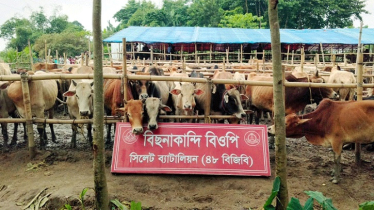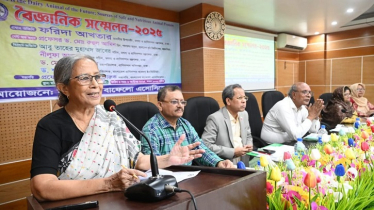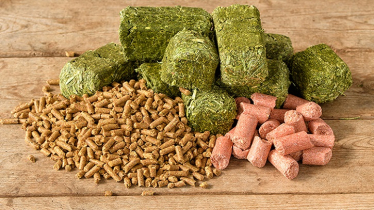
An anthrax outbreak has spread across several upazilas of Rangpur and Gaibandha, forcing livestock farmers to sell off their cattle and goats at low prices amid growing fear and financial loss.
In Pirgacha upazila of Rangpur, Babu Mia from Anantarama Barabari village had eight cows on his farm. Two of them died last month after being infected with anthrax. Terrified, he sold the remaining six at half their market value. In neighboring Gaibandha’s Sundarganj upazila, six new human cases were confirmed on Monday and Tuesday, raising fresh concern among residents.
Another small farmer from Pirgacha, Habibur Rahman, who owned seven local-breed cows, shared a similar fate. “When one cow showed symptoms, I sold the others quickly,” he said. “This farm was my livelihood. I used to sell the cattle every year to run my family and buy calves for rearing. Now my capital is gone. Without help, I cannot continue farming.”
Like Babu Mia and Habibur Rahman, many local farmers have rushed to sell their cattle, goats, and sheep at reduced prices. Traders and butchers are buying livestock cheaply, taking advantage of the panic.
According to the Rangpur Livestock Department, the region’s eight districts have a total of 8,434 registered and unregistered cattle farms, and 5,726 goat and sheep farms. These collectively house about 9.5 million cattle and nine million goats and sheep. Rangpur district alone has 4,515 livestock farms, with 630 located in Pirgacha upazila.
Investigations revealed that anthrax infections among cattle in Pirgacha began in June, later spreading to humans. Symptoms have also been detected in livestock in Kaunia, Mithapukur, and neighboring Sundarganj upazilas, sparking widespread fear among farmers and residents.
A team from the Institute of Epidemiology, Disease Control and Research (IEDCR) recently identified anthrax symptoms in 11 people in Mithapukur. Many farmers have since rushed to sell their animals, while others have sought treatment and vaccinations for their livestock.
Locals said panic has spread more rapidly than the actual infection, causing unnecessary distress.
To contain the risk, multiple field teams from the Department of Livestock Services (DLS) are conducting awareness drives. On Tuesday, the ministry’s Director (Administration) Dr. Md. Boyjar Rahman visited affected areas in Pirgacha, assuring farmers of necessary advice, medicines, and vaccine supplies.
In Gaibandha’s Sundarganj upazila, six new human infections have been reported over the past two days, bringing the total number of cases to 22 as of Tuesday.
According to the Sundarganj Upazila Health Complex, those infected between October 1 and October 7 include residents from several villages in Belka and Kismat Sadar. The infected individuals are Samiyul Islam, Sahadat Hossain, Sabuj Mia, Azizul Haque, Bhutta Mia, Atikur Rahman, Shahidul Islam, Mojahar Ali, Mojaffar Hossain, Khatib Mia, Faridul Haque, Rojina Begum, Moja Mia, Mahbur Rahman, Shafiqul Islam, Swadhin Mia, Sakina Begum, Taizul Mia, Shaifan Begum, Afrin Begum, Shaldia Islam, and Roisul Mia.
Upazila Health and Family Planning Officer Dr. Dibakar Basak said, “None of the patients were in critical condition. Most came at night, so we provided medicines the following day. Six more received treatment over the past two days, bringing the total treated at our facility to 16.”
Upazila Livestock Officer Biplob Kumar Dey confirmed that vaccination drives are ongoing. “We are organizing courtyard meetings, loudspeaker announcements, and leaflet distribution to raise awareness. Anthrax is not a contagious disease among humans. Two more cows have tested positive for anthrax spores,” he said.





